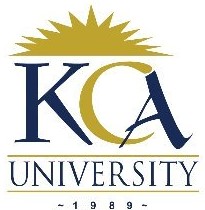 UNIVERSITY EXAMINATIONS: 2011/2012
UNIVERSITY EXAMINATIONS: 2011/2012
SECOND YEAR EXAMINATION FOR THE BACHELOR OF
SCIENCE IN INFORMATION TECHNOLOGY
BIT2307 GEOGRAPHIC INFORMATION SYSTEMS
DATE: AUGUST, 2012 TIME: 2 HOURS
INSTRUCTIONS: Answer Question ONE and any other TWO
QUESTION ONE
a) Explain the meaning of the following terms with reference to GIS;
i. Georeferencing (2 Marks)
ii. Linear transform (2 Marks)
iii. Helmert transform (2 Marks)
iv. Geo-spatial data (2 Marks)
b) Briefly discuss any three approaches towards the modeling of surface entities
(6 Marks)
c) Discuss any three major categories of referencing systems in GIS (6 Marks)
d) Explain why it’s important that all data loaded into a map is in the same map
properties. (4 Marks)
e) The construction of models of spatial form can be thought of as a series of stages.
Describe the steps involved in this process (6 Marks)
QUESTION TWO
a) i. Define the term OTF projection. (3 Marks)
ii. Describe why it’s useful to set the OTF projection on in any GIS project.
(4 Marks)
b) Discuss the ways in which vector data can be acquired (5 Marks)
c) Identify the classic network-type problems considered during network analysis
(8 Marks)
QUESTION THREE
a) i. Discuss the issues to be considered when scanning maps for use in GIS
(6 Marks)
ii. Highlight the basic spatial entities that may represent features on a map
(4 Marks)
b) By use of appropriate illustration, explain the following types of raster
compaction techniques;
i. Run-length encoding (2 Marks)
ii. Quadtrees (2 Marks)
iii. Chain coding (2 Marks)
c) Discuss the technique used by the Universal Transverse Mercator (UTM) for georeferencing (4 Marks)
QUESTION FOUR
a) Remote sensing data is considered advantageous for many GIS applications.
Highlight the three major technologies for remote sensing (6 Marks)
i. Discuss three particular features of object data models that make them ideal for
modeling geographic systems (3 Marks)
ii. Highlight the reasons why attribute data for GIS database may be assigned codes
(3 Marks)
b) QGIS supports a number of symbology renderers to control how vector features
are displayed. Describe four such renderers (8 Marks)
QUESTION FIVE
a) Distinguish between thematic and topographic maps and give an illustration of
each (4 Marks)
b) Compare the relative advantages of raster data with those of vector data
(6 Marks)
c) i. Several errors may arise during the encoding of attribute data. Identify
some these errors (6Marks)
ii. Spatial entities are dynamic. Highlight four types of temporal (time)
events which provide an indication of the types of changes that may affect
an entity (4 Marks)